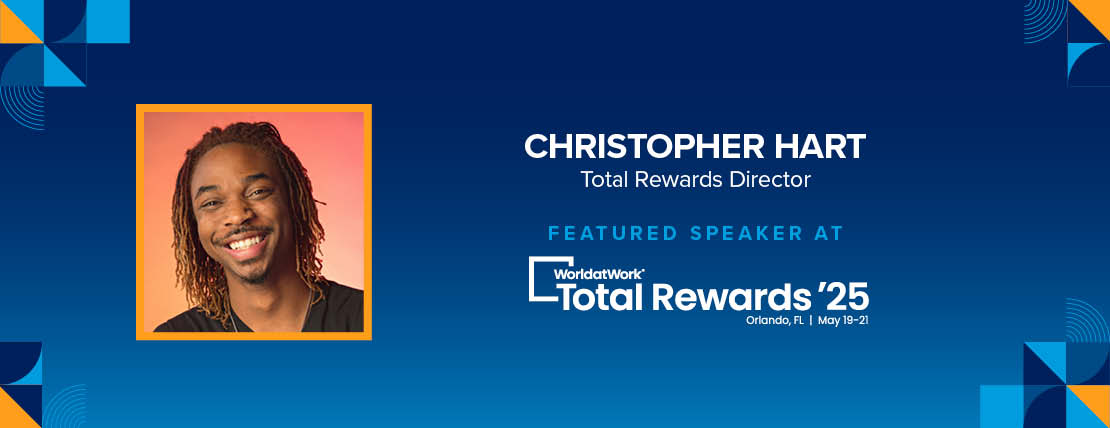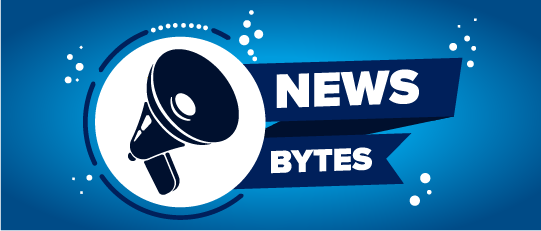For WorldatWork Members
- Anatomy of a Wellness Program: Ensuring Regulatory Compliance, Workspan Daily Plus+ article
- Ready, Set, Go: Optimize Your Physical Well-Being Programs, Workspan Daily Plus+ article
- Workplace Wellness: Best Practices Study, Journal of Total Rewards article
- Workplace Well-Being Deserves a Fresh Look, Journal of Total Rewards article
- Workplace Well-Being Trends, research
For Everyone
- Total Rewards ’25, conference
- Wealth Through Health: The Benefits of a Stronger Well-Being Program, Workspan Daily article
- How to Get Gen Z On Board with Employee Benefits, Workspan Daily article
- With a Multigenerational Workforce, Personalized Rewards Are Key, Workspan Daily article
Most employers offer well-being benefits to their employees to at least some degree. WorldatWork’s most recent Total Rewards Inventory of Programs & Practices research found 70% of surveyed organizations have a participatory wellness program. In addition, the offering may include things like:
- Employee assistance programs (94% of surveyed organizations)
- Health coaching (68%)
- Wellness incentives (66%)
- Biometric/wellness screenings (64%)
- Even wearable technologies for tracking/encouraging wellness results (29%)
With such benefits, and the affiliated costs, you would think the workforce would be well and good with this aspect of total rewards.
However, in general, the increased resources and focus have yet to make a marked difference. According to Gallup research published in November 2024, just 24% of surveyed U.S. workers “strongly agreed” that their organization cared about their overall well-being.
What might employers take from that, and how might they respond?
Christopher Hart has some thoughts on the matter. In his role as the total rewards director at Boldyn Networks, a global communications infrastructure company, he has put considerable thought and effort to the matter. Over the past year-plus, Hart has played a key role in the creation and implementation of a holistic corporate well-being program that goes beyond traditional health benefits — fostering wellness across multiple dimensions, including physical, mental, social and financial well-being. The result has been a well-rounded approach to employee wellness that has worked to enhance engagement, improve productivity and support long-term organizational success.
Hart will share Boldyn Networks’ story in a featured session titled “Holistic Well-Being: A Comprehensive Approach to Employee Wellness” at WorldatWork’s Total Rewards ’25 conference, coming up on May 19-21 in Orlando, Fla.
In that session, he will outline how to:
- Use data to personalize offerings to ensure well-being programs cater to a diverse workforce.
- Evaluate how well-being aligns with organizational initiatives and contributes to business outcomes.
- Address multiple well-being dimensions through personalized programs.
Workspan Daily Editor Paul Arnold recently connected with this industry leader (who is also a member of WorldatWork’s Events Experience Advisory Council) to discuss well-being benefits and strategies to better address this aspect of total rewards.
Check out other Workspan Daily articles from Total Rewards ’25:
- Might a Sales Mindset Be Your Key to Total Rewards Success?
- The Monumental Mission of Meaningful Mentorships
- Proactive TR Pros See ‘Train’ of Change Coming, Take Steps to Act
- The Keys to Creativity and Driving Innovative Total Rewards
- The Pros and Cons of Giving Managers Discretion on Merit Increases
- Using Analytics, Innovative Framework to Transform HR/Total Rewards
- How An Industry Leader Sees Technology Transforming Total Rewards
- Biopharma Compensation Leader Has Put AI Under the Microscope
Arnold: Where do total rewards functions typically fall short when it comes to their well-being programs and offerings? And, why is now — perhaps more than ever — the time for organizations to revisit and perhaps refresh what they are doing in this area?
Hart: From my perspective, total rewards functions often fall short by focusing well-being efforts too narrowly — typically on physical health or basic preventive care — without addressing the broader spectrum of employee needs. Programs are frequently one-size-fits-all, lacking personalization or relevance to diverse employee demographics, life stages and job types. The time is ripe to revisit these programs because the way we work — and the expectations employees have — has fundamentally shifted. Hybrid work, economic stressors, civil unrest and increased awareness of mental health have made it clear that employees need more than just access to a gym or flu shots — they need to feel seen, supported and valued across all areas of their well-being.
Arnold: How might a multi-dimensional approach to well-being — accounting for physical, mental, social and financial well-being — be a path forward?
Hart: I believe a multi-dimensional approach that incorporates physical, mental, social and financial well-being offers a more complete and inclusive path forward. It recognizes that employees are whole people with complex, intersecting needs. When organizations support all four pillars, they can better engage employees, reduce burnout, and foster a stronger sense of connection and purpose. For example, financial stress impacts mental health, just as social disconnection can affect physical well-being. By addressing these dimensions in tandem, we not only can create more resilient employees but also drive measurable business outcomes like productivity, retention and morale.
Arnold: How have you been bringing this approach to Boldyn Networks?
Hart: At Boldyn Networks, we’re actually in a very uniquely perfect situation. We are a company made up of a large number of acquisitions that have just integrated under one Boldyn brand. As a result, we now have the opportunity to integrate all our key components of well-being, inclusivity and culture into one people philosophy. I am privileged to be able to work with a passionate and intelligent people team that genuinely cares for their employees and has made a stance on inclusivity and the employees’ best interest. As a result, we’ve already begun to embed a more holistic lens across our total rewards strategy. We started by evaluating gaps in our existing programs using survey feedback, employee focus groups and utilization data. From there, we have started reviewing the resources and partnerships that address and perpetuate our holistic approach and goals. We’ve also worked to ensure these programs are inclusive and accessible for our remote, global workforce by leveraging digital tools and flexible design.
Arnold: What have you seen so far in terms of results, and what are some of the additional anticipated results?
Hart: So far, we’ve seen encouraging signs: higher engagement in well-being resources, improved sentiment in employee pulse surveys, and stronger utilization of mental health and financial well-being tools. Employees are increasingly vocal about the value of these offerings, and we’re noticing improved awareness of the support systems available to them. Looking ahead, we anticipate more sustained improvements in retention, productivity and the overall employee experience. We also expect that by continuing to personalize and evolve our programs, we’ll be better positioned to attract top talent and meet the diverse needs of our growing workforce.
Arnold: How have internal and external collaborations proved helpful in your program’s progress?
Hart: Internal and external collaboration has been pretty vital. Internally, we’ve cross-collaborated with all our human resources business partners, functional leaders and employee champions to ensure the programs resonate with employees across functions, levels and locations. Externally, working closely with our vendors and brokers has allowed us to consolidate resources and find available flexible solutions and tailor them to specific needs — whether that’s launching virtual mental health apps, partnering with advocacy groups to investigate and reconcile health claims that may affect families’ financial and mental health, or creating custom lunch-and-learn resources around financial planning. These partnerships also have helped us benchmark against market trends and push our programs beyond compliance into real culture-building efforts.
Arnold: What would be a piece of sage advice you can offer total rewards pros who may be considering a more holistic approach to employee well-being?
Hart: I would say, start by listening. Use data [and anecdotal information] that you have at your disposal — surveys you can conduct, [insights] from questions you are already asking and real employee stories — to uncover what your people actually need, not just what’s traditionally been offered. From there, don’t try to boil the ocean. Start small, build momentum and ensure each initiative is meaningful and measurable. Holistic well-being is not about doing more; it’s about doing what matters most for the people who make your business possible.
Editor’s Note: Additional Content
For more information and resources related to this article, see the pages below, which offer quick access to all WorldatWork content on these topics:







